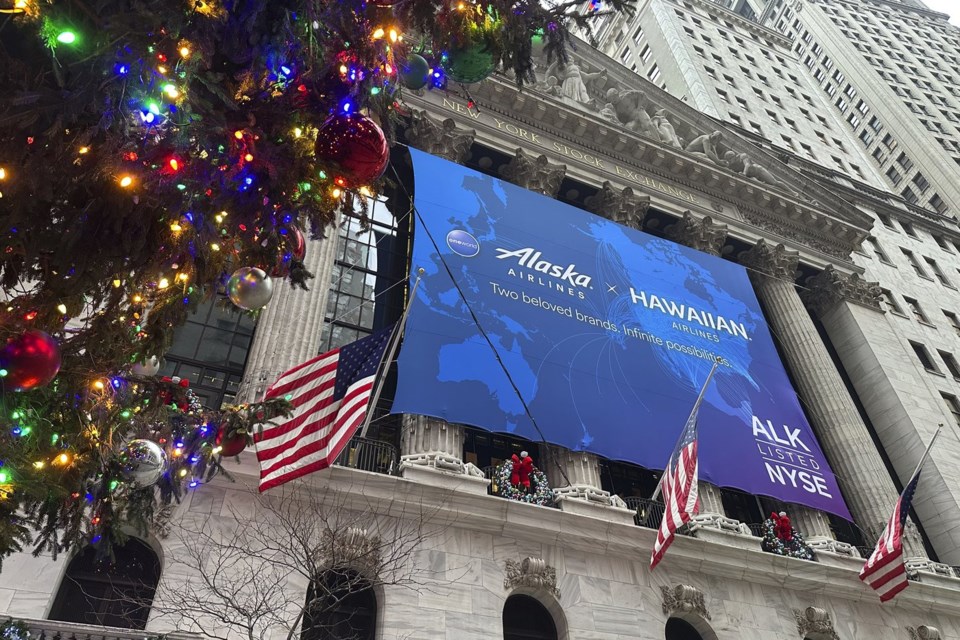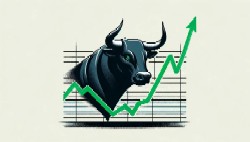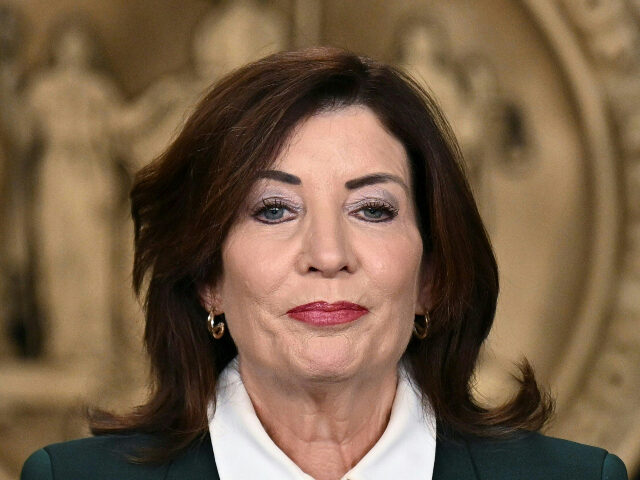from The Rich Dad Channel
Inflation Increased in November, Complicating Fed’s Next Rate Decision
Inflation has fallen dramatically but remains above the Fed’s target rate.
by Max Zahn
ABC News
 Consumer prices rose 2.7% in November compared to a year ago, ticking upward from the previous month and potentially giving pause to the Federal Reserve as it weighs an interest rate cut expected next week. The reading matched economists’ expectations.
Consumer prices rose 2.7% in November compared to a year ago, ticking upward from the previous month and potentially giving pause to the Federal Reserve as it weighs an interest rate cut expected next week. The reading matched economists’ expectations.
The fresh data marked two consecutive months of rising inflation, extending a bout of accelerated price increases that has reversed some of the progress made in lowering inflation earlier in the year.
The inflation gauge makes up the last piece of significant economic data before the Fed announces its next interest rate decision on Dec. 18.
Core inflation — a closely watched measure that strips out volatile food and energy prices — increased 3.3% over the year ending in November, matching the previous month, the data showed.
Here’s the Inflation Breakdown for November 2024 – In One Chart
The consumer price index increased 2.7% in November 2024 from a year earlier, according to the Bureau of Labor Statistics.
by Greg Iacurci
CNBC.com
 Consumers saw inflation pick up slightly in November as price increases in categories including groceries, gasoline and new cars outweighed a deceleration in others such as shelter during the month.
Consumers saw inflation pick up slightly in November as price increases in categories including groceries, gasoline and new cars outweighed a deceleration in others such as shelter during the month.
The consumer price index, a key inflation gauge, rose 2.7% last month relative to November 2023, the Bureau of Labor Statistics reported Wednesday. The annual rate was up from 2.6% in October.
“I don’t see an acceleration” of inflation, said Mark Zandi, chief economist at Moody’s. “But I think it’s persistently too strong.”
CPI Rose 2.7% in November From a Year Ago as Fed Struggles to Snuff Out Inflation
by Aimee Picchi
CBS News
 Inflation rose 2.7% on an annual basis in November, according to the latest government report on the Consumer Price Index, or CPI.
Inflation rose 2.7% on an annual basis in November, according to the latest government report on the Consumer Price Index, or CPI.
Last month’s CPI was forecast to come in at 2.7%, according to economists surveyed by financial data firm FactSet. The Consumer Price Index, a basket of goods and services typically bought by consumers, tracks the change in those prices over time.
The Federal Reserve has been battling high inflation since 2022, when it began ratcheting up its benchmark rate in order to dampen demand from consumers and businesses. That’s helped lower the inflation rate to its current level from a recent peak of 9.1% in June 2022, yet the last leg of the Fed’s journey to push inflation down to a 2% annual rate is proving elusive.
U.S. Inflation Rose to 2.7% in November
Figure matches Wall Street’s forecasts and clears way for Federal Reserve rate cut next week
by ColSmith and Harriet Clarfelt
FT

Wednesday’s data from the Bureau of Labor Statistics was in line with the expectations of economists polled by Bloomberg. But it was higher than the 2.6 per cent rate in October, which itself marked an increase on the previous month.
Market pricing indicated that investors now assign a more than 98 per cent probability to a quarter-point rate cut in December, up from less than 90 per cent before the release of the latest inflation figures.
Brian Levitt, global market strategist at Invesco, said the figures were “very much within the Fed’s comfort zone and support[ed] a rate cut at the next meeting”. A quarter-point cut next week would take interest rates to a new target range of 4.25-4.5 per cent.
Stock Market Today: Wall Street Drifts Lower as it Waits for Inflation Data
NEW YORK (AP) — U.S. stock indexes drifted lower in the runup to the highlight of the week for the market, the latest update on inflation. The S&P 500 slipped 0.3% Tuesday and marked its first back-to-back losses in three weeks.
by Stan Choe
BIV

NEW YORK (AP) — U.S. stock indexes drifted lower in the runup to the highlight of the week for the market, the latest update on inflation. The S&P 500 slipped 0.3% Tuesday and marked its first back-to-back losses in three weeks. The Dow Jones Industrial Average fell 0.3%, and the Nasdaq composite also fell 0.3%. Oracle dragged on the market after reporting weaker growth than analysts expected. Treasury yields rose in the bond market ahead of Wednesday’s inflation report, which will be among the final big pieces of data before the Federal Reserve’s meeting on interest rates next week.
THIS IS A BREAKING NEWS UPDATE. AP’s earlier story follows below.
NEW YORK (AP) — U.S. stock indexes are drifting lower Tuesday in the runup to the highlight of the week for the market, the latest update on inflation that’s coming on Wednesday.
The S&P 500 dipped by 0.2% in late trading, a day after pulling back from its latest all-time high. The index is on track for its first back-to-back losses in more than three weeks, as momentum slows following a big rally that has it on track for one of its best years of the millennium.
The CPI Report Wednesday is Expected to Show That Progress On Inflation Has Hit a Wall
The consumer price index is expected to show a 2.7% 12-month inflation rate for November, up one-tenth of a percentage point from October. Core CPI is forecast at 3.3%, or unchanged from October.
by Jeff Cox
CNBC.com
 A key economic report coming Wednesday is expected to show that progress has stalled in bringing down the inflation rate, though not so much that the Federal Reserve won’t lower interest rates next week.
A key economic report coming Wednesday is expected to show that progress has stalled in bringing down the inflation rate, though not so much that the Federal Reserve won’t lower interest rates next week.
The consumer price index, a broad measure of goods and services costs across the U.S. economy, is expected to show a 2.7% 12-month inflation rate for November, which would mark a 0.1 percentage point acceleration from the previous month, according to the Dow Jones consensus.
Excluding food and energy, so-called core inflation is forecast at 3.3%, or unchanged from October. Both measures are projected to show 0.3% monthly increases.
November CPI Report Marks Latest Test for Fed in Fight Against Inflation
by Alexandra Canal
Yahoo! Finance
November’s Consumer Price Index (CPI) will serve as the latest test of whether an inflation resurgence is a risk to the US economy as the Federal Reserve debates its final interest rate decision of the year after cutting rates by 75 basis points so far in 2024.
The report, set for release at 8:30 a.m. ET on Wednesday, is expected to show headline inflation of 2.7%, a slight uptick from October’s 2.6% annual gain in prices. Consumer prices are expected to have risen 0.3% over the prior month, also ahead of the 0.2% monthly increase seen in October.
On a “core” basis, which strips out the more volatile costs of food and gas, prices in November are expected to have risen 3.3% over last year for the fourth consecutive month. Economists expect monthly core price increases to also match the prior month’s reading of 0.3%, according to Bloomberg data.
Wall Street Sways as Investors Brace for Inflation Insights
by Finimize Newsroom
Finimize
 What’s going on here?
What’s going on here?
Wall Street faced a dip with investors eagerly awaiting key inflation data that could determine the Fed’s interest rate decision next week.
What does this mean?
Investors are on edge this week, as crucial inflation reports are expected to influence the Fed’s upcoming rate decision. This nervous anticipation comes amid a turbulent mix of tech sector ups and downs. Alphabet’s shares soared thanks to a new chip announcement, lifting the communication services sector. Meanwhile, Oracle’s underwhelming second-quarter report led to a sell-off in tech stocks, worsened by challenges in the chip sector due to China’s scrutiny of Nvidia. Major indexes mirrored this uncertainty: the S&P 500 fell 0.27%, the Nasdaq slipped 0.25%, and the Dow Jones dropped 0.32%. With the Consumer Price Index (CPI) report likely to show a slight increase to 2.7%, the market projects an 86% chance of a rate cut at the Fed’s December 17-18 meeting, strongly influenced by recent job data.
Stocks Slide as Investors Brace for Inflation Data
by P. Martin
NASDAQ
 Stocks continued their sluggish price action today, with all three major indexes finishing modestly lower. The Dow logged its fourth-straight triple-digit loss as the tech sector continued to churn, with software stalwart Oracle (ORCL) a latest culprit. Wall Streetow braces for November’s consumer price index (CPI) due out tomorrow morning, just as the Cboe Volatility Index logs its highest close in over two weeks.
Stocks continued their sluggish price action today, with all three major indexes finishing modestly lower. The Dow logged its fourth-straight triple-digit loss as the tech sector continued to churn, with software stalwart Oracle (ORCL) a latest culprit. Wall Streetow braces for November’s consumer price index (CPI) due out tomorrow morning, just as the Cboe Volatility Index logs its highest close in over two weeks.
[…] Gold Stays Hot Ahead of CPI Data
Oil prices rose again today, albeit marginally, as middle east tensions and China’s economic developments propped up black gold. For the session, January-dated West Texas Intermediate (WTI) crude added 22 cents, or 0.3%, to settle at $68.59 per barrel.
New York Governor Kathy Hochul Proposes $300 ‘Inflation Refund’ Payments
[Ed. Note: It’s a particularly stupid group of tax payers who believe that they can pay taxes, then get those taxes handed back to them, and that this circle jerk somehow reduces inflation. We’re talking about really, really stupid people here. Sorry, what I meant to say was… FREE MONEY!!!!]
by Olivia Rondeau
Breitbart.com
 New York Gov. Kathy Hochul has proposed a one-time $300 payment to individuals earning $150,000 or less, and $500 to couples making $300,000 or less, her office announced Monday.
New York Gov. Kathy Hochul has proposed a one-time $300 payment to individuals earning $150,000 or less, and $500 to couples making $300,000 or less, her office announced Monday.
In what would be the state’s first “Inflation Refund,” Hochul wants to send about 8.6 million New Yorkers a few hundred dollars starting in fall 2025 if approved by the legislature, an official press release stated.
Around $3 billion in taxpayer funds would be allocated for the payments, which the governor called a “break” for her constituents.
“Because of inflation, New York has generated unprecedented revenues through the sales tax — now, we’re returning that cash back to middle class families,” Hochul said. “My agenda for the coming year will be laser-focused on putting money back in your pockets, and that starts with proposing Inflation Refund checks of up to $500 to help millions of hard-working New Yorkers. It’s simple: the cost of living is still too damn high, and New Yorkers deserve a break.”
